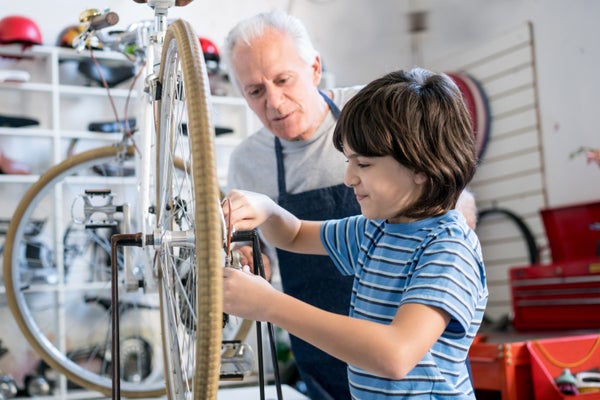This article was published in Scientific American’s former blog network and reflects the views of the author, not necessarily those of Scientific American
Imagine a small group of people with a shared passion for the same craft. They all have different skills and approaches, but they like to get together and share their work. Their get-togethers feature a mix of progress reports and troubleshooting. They also provide the chance to show off to an audience that appreciates the effort that went into a given creation. Depending on your age or interests, this description might bring to mind a knitting club, a group that rebuilds classic cars, cosplayers, or even science fiction fans trying to create an animatronic hand. Whatever the scope, these communities come together to share skills, share stories, and share in the joy of making something from scratch.
While modern maker culture is filling headlines and lab spaces all over the world, the urge to create is familiar to any generation. Its current face may come with glamor shots of circuit boards and 3D printers, but the practice is by no means limited to people with access to the latest fablabs. When my husband and I had a winter low on funds and high on indoor time, we looked around the apartment for inspiration. We settled on a stack of newspapers. We had each made piñatas as children, and after perusing some online creations, we set out to make helmets and shields out of coat hangers and paper mache. Getting the helmets to fit after they dried and designing twisted horns took many iterations. We didn’t use any sophisticated tools, but we improved and were proud to show off the results to each other at the end of the day.
Other skills I have learned – from soldering to crocheting – came from personal sit-downs with members of my family. But sometimes a teacher isn’t available, or the one available doesn’t know how to do the skill you want to learn. Today a teacher doesn’t even have to be in the same country or occupy the same decade as the student. Thanks to the work of people who took the time to break down and share the details of their craft, an interested individual can learn anything from contouring makeup to fabricating chainmail online. Guides may range from video tutorials to diagrams and text. Regardless of the medium – from knitting patterns to how-to videos to open-source code – maker resources are meant to be shared.
On supporting science journalism
If you're enjoying this article, consider supporting our award-winning journalism by subscribing. By purchasing a subscription you are helping to ensure the future of impactful stories about the discoveries and ideas shaping our world today.
One of the other hallmarks of the maker movement is the crossover between different interests. Perhaps someone loves both cosplay and electronics – and wants to give their Thor a lightning upgrade for the next convention. Perhaps a passion for cars and for leathercraft can result in a truly custom interior. Perhaps a love of knitting and robotics will result in a tiny – but very mobile – herd of plush cats.
And once you have started your creation, finding a community to share with is no longer limited to the people nearby. Modern makers have been sharing videos of their progress and pitfalls online for years. Some groups have extended that model even further and created online forums. As different as the participants might be, they share enthusiasm, mutual support, and a willingness to try.
While I have made many more sophisticated things in my life, one stand-out memory is the ping-pong table our friends built on a whim in college. One group built the basic (if non-regulation) frame. Another group took on the responsibility of painting. I crocheted the net. There was joy in just giving it a try. It reminded me of childhood creations, like adding colored bits of plastic to customize our flashlight lightsabers. Even if the steps were small, we felt like innovators. Whether you are an experienced programmer or just picking up a hammer for the first time, it is never a bad time to come up with an idea, try something, and share the results.
